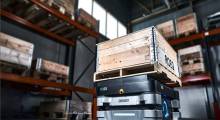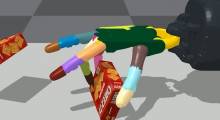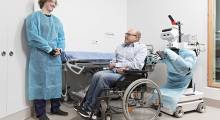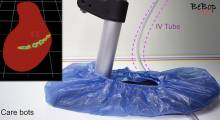A combination of humanid robots, origami, and leech-inspired sensors could carry out basic healthcare tasks in remote regions or where direct human contact needs to be minimized, such as during pandemics. Woo Soo Kim, a researcher at Simon Fraser University, has developed technology that would enable robots to take a patient's blood pressure with a simple touch.
Kim, Ph.D. student Tae-Ho Kim, and a team in SFU's Additive Manufacturing Lab have researched how the intracies of origami and bioinspired motion can help robots perform diagnostic procedures. They have replaced the traditional blood-pressure check by replicating the folding mechanisms of the leech in their design of 3D-printable origami sensors.
The leech-inspired origami (LIO) sensors can be integrated onto the fingertips of a humanoid sensing robot. The research was published in the journal npj Flexible Electronics from Nature Publishing Group.
“Our origami-inspired dry electrode has unique characteristics such as suction for grasping and foldability inspired by nature,” said Kim, a professor and associate director of SFU's School of Mechatronic Systems Engineering.
“In keeping with nature, we saw that in addition to the complex mechanisms of a leech's adhesive feature, these creatures have an expandable posterior sucker and body, while its organs expand and shrink appropriately to maintain better adhesion to its victim,” he explained. “Incorporating this point of view, we found that origami can achieve similar motions and also be customized.”
Pepper checks BP with LIO sensors
The Simon Fraser University researchers integrated the LIO sensors into the fingertips of a SoftBank Pepper humanoid robot. Sensors on the fingers of each hand can be positioned on a patient's chest to take electrocardiogram (ECG) and photoplethysmogram (PPG) readings. Blood pressure is monitored and estimated by combining the sensor data from each hand.
Using predetermined algorithms, the signals from the paired sensors can generate a patient's systolic and diastolic blood pressure without using the traditional cuff-based digital sphygmomanometer.
Kim's earlier work involved programming sensing robots to measure other human physiological signals, such as temperature, respiration rate, and those from an ECG, which monitors heart rate.
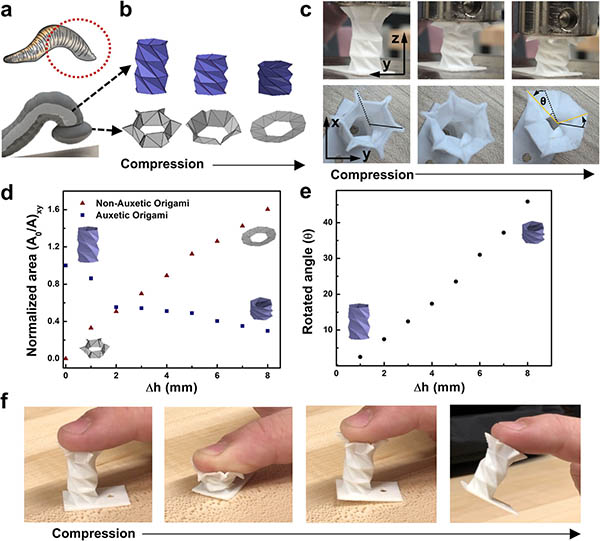
Robots to bridge remote care
“Robotics offers a promising method to mitigate risk and improve patient-care effectiveness and quality as focused remote healthcare technology,” said Kim.
The researchers plan further trials of their new process and are developing the next generation of sensors, which they said they hope will lead to its biomedically meaningful implementation.
“Blood pressure monitoring is an essential medical diagnostic tool for many chronic diseases and overall good health,” Kim said. “The use of sensing robots in medical healthcare systems has substantial advantages because they can assist healthcare workers in monitoring patient vital signs while creating a friendly environment for those patients who may need to be isolated.”
Kim asserted that robotics can provide a future platform or bridge between medical personnel and remote patients, with “the potential to play an essential role in the new era of remote healthcare.”
The research is partially supported by a Discovery and Accelerator Supplement Grant, funded by the Natural Sciences and Research Council of Canada (NSERC).
Article topics
Email Sign Up




